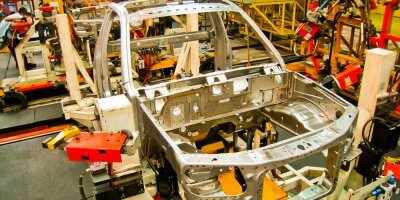
A man getting food from a robot at the ROBOT.HE restaurant in Shanghai. The little robotic waiter wheels up to the table, raises its glass lid to reveal a steaming plate of local Shanghai-style crayfish and announces in low, mechanical tones, “Enjoy your meal.” / AFP PHOTO
China is solving labor issues with robots
ACCORDING to World Bank data, China’s working population has been constantly declining since 2010. As a result, labor costs have been rising for businesses.
As a result, Alibaba has resorted to deploying robots to replace waiters in Chinese restaurants.
At the “Robot.He” diners, patrons are served by robots that roll around on table-high runways. It’s similar to conveyer belt sushi restaurants where dishes are sent to your table. Except, the dishes are served by robots the size of microwaves and are not constrained to the “belt”.
The diners are a part of Alibaba’s Hema chain of semi-automated supermarkets, which is part of the company’s initiative in driving an omnichannel retail model.
“In Shanghai, a waiter costs up to 10,000 yuan (US$1,500) per month. That’s hundreds of thousands in cost every year. And two shifts of people are needed,” Cao Haitao, the Alibaba product manager who developed the concept, told newswire AFP. “But we don’t need two shifts for robots and they are on duty every day.”
According to AFP, skeptics seem to think that the robots are more for show rather than an actual business model, as China’s labor costs are already low.
Alibaba isn’t alone in rolling out robot waiters. Rival JD has also announced plans to open 1,000 fully robot manned restaurants by 2020. As a reference, Alibaba’s Hema is present in 57 locations across 13 Chinese cities, all of which will feature the robotic waiters soon.
From another perspective, however, China’s e-commerce growth is beginning to plateau. More and more companies are focusing on improving operations, rather than rapid expansion of the business.
One aspect is the rise of digital payments. As mobile wallets become a preferred payment method over cash, retail operations are increasingly turning cashier-less.
There is now a growing number of pharmacies, bookstores, and retailers that use robots to handle customer requests. Users can order and pay for their items without ever having to deal with a human.
Robots are increasingly being integrated into the Chinese commerce sector, and it didn’t take too long for them for “roll” into restaurants. Customer service robots are efficient and cheap, and thus, help boost productivity.
While the current costs of robots remain a tad too high for mass rollout across all consumer functions, AI advocates believe that robots will one day take over mundane tasks or low-level jobs.
With a continually declining birth rate, the Chinese are facing an aging population. If robots aren’t ready to take over the menial jobs soon, it might prove too much strain for the existing workforce to keep the country going.
READ MORE
- Ethical AI: The renewed importance of safeguarding data and customer privacy in Generative AI applications
- How Japan balances AI-driven opportunities with cybersecurity needs
- Deploying SASE: Benchmarking your approach
- Insurance everywhere all at once: the digital transformation of the APAC insurance industry
- Google parent Alphabet eyes HubSpot: A potential acquisition shaping the future of CRM




